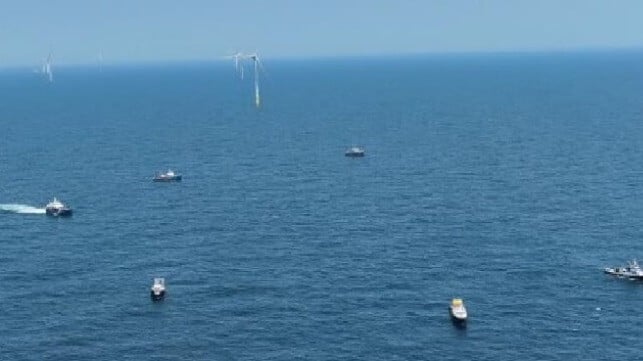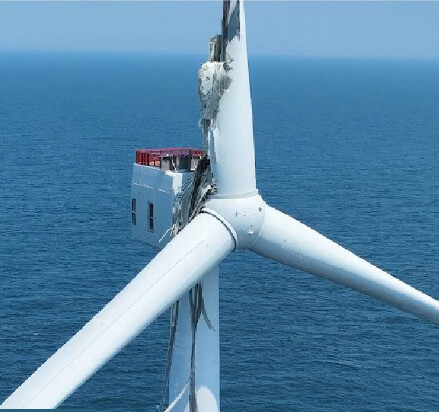High-Tech “Crawlers” Deployed to Survey Vineyard Wind's Turbine Blades

A month after an embarrassing incident in which one of the turbine blades broke at the Vineyard Wind offshore wind farm, the developer presented its recovery plan. It is working with the U.S. Bureau of Safety and Environmental Enforcement, as well as the U.S. Coast Guard, and has retained Resolve Marine to assist Vineyard Wind and GE Vernova in the recovery effort. At the same time, residents continue to report finding fragments washed up on the shoreline of Massachusetts.
The project continues to repeat the preliminary assessment that is now completed by GE Vernova which cites a “manufacturing deviation” in the bonding of the composite material used to make the blades. The companies had said it was an identifiable issue with the adhesion that should have been discovered during quality control.
The blade initially broke on July 13 while one of the turbines not in service was undergoing testing. The automated safety controls stopped the individual turbine. Parts of the blade remained attached, while some sections were caught on the base and the remainder fell into the water. Elements of the composite material and the lightweight foam began washing up before the blade broke further in the following days. Work at the wind farm both on the turbines in service and construction was suspended and remains under a stop work order from BSEE.
Hoping to recover and get the project back on track, Vineyard Wind summarized the plan that has been developed and approved. Crews have already inspected the turbine for safety and with Resolve the plan calls for four steps. They will rotate the blade to reduce the hanging pieces and prepare for possible controlled cutting. The root of the blade will be removed from the hub, and debris cleared from the platform. They also plan to address seabed debris.
Vineyard said as part of its commitment that “No blades will be installed or used in operations until thoroughly inspected.” The cutting operation took place on Sunday and Monday taking down large portions of the damaged blade and as of Tuesday BSEE permitted the project to resume the installation of towers and nacelles while the investigation of the blades continues.

One of the wind turbine blades installed at Vineyard Wind broke apart in mid-July (VIneyard Wind)
Advanced remote-controlled robots called “crawlers” are being inserted into the manufactured blades to allow for a visual inspection. The crawler is equipped with a video camera to assist with the visual inspection of critical areas of the blade and assists with photos and videos.
GE Vernova previously said that all the blades manufactured at its facility in Canada would be undergoing inspection to determine if the error was isolated to more widespread. This process also includes re-examining over 8,300 ultrasound images that were made of each blade during the manufacturing process. They are measuring bonding widths in the blade and looking for any other anomalies.

that matters most
Get the latest maritime news delivered to your inbox daily.
A new algorithm is also being prepared by GE Vernova to use with the existing sensors in each blade. The goal is to better detect issues to avoid a similar failure.
The project, which is being developed in a partnership between Avangrid and Copenhagen Infrastructure Partners, had already been slowed by construction challenges. BSEE permitted limited onshore work to proceed but until the integrity of the blades can be confirmed, power generation and further installation remain delayed. Opponents of the offshore wind sector have also used the incident in an effort to rally support for blocking the development of further offshore wind farms.
